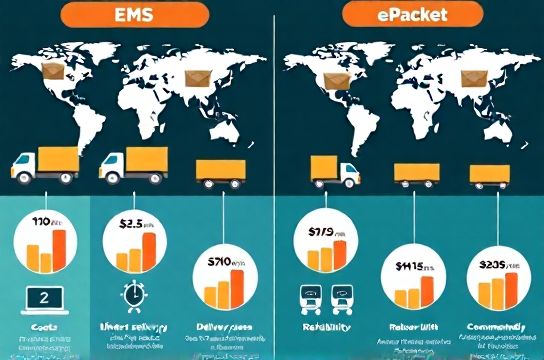Comparing EMS and ePacket Shipping from China Accurately
- 时间:
- 浏览:46
- 来源:OrientDeck
So you're shipping from China—whether you're an e-commerce seller, a dropshipper, or just sending a gift—and you’re stuck between EMS and ePacket. No worries! We’ve got your back. Let’s break it down in plain English (well, digital ink), with real data, speed stats, and a side of honesty.

What’s the Real Difference Between EMS and ePacket?
Both are international shipping methods originating from China, but they serve different needs.
- EMS (Express Mail Service): Think of it as the premium courier option—fast, trackable, and reliable. Run by postal services globally, including China Post.
- ePacket: A budget-friendly hybrid service created for small online sellers. It’s faster than standard mail but cheaper than express options like DHL or FedEx.
Speed: Who Wins the Race?
When you're selling online, time = money. Here's how they stack up:
| Service | Delivery Time (Avg) | Best For |
|---|---|---|
| EMS | 7–12 days | Urgent, high-value items |
| ePacket | 10–20 days | Budget-conscious sellers, lightweight goods |
Notice that overlap? While EMS is generally faster, delays happen—especially during holidays. ePacket might surprise you with 12-day delivery to the U.S., but don’t count on it.
Cost Comparison: How Much Will You Save?
Let’s get real: if you’re shipping a 0.5kg package to the U.S., here’s what you’d pay (as of 2024):
| Weight | EMS Cost (USD) | ePacket Cost (USD) |
|---|---|---|
| 0.5 kg | $28–$35 | $12–$16 |
| 1.0 kg | $45–$55 | $20–$25 |
| 2.0 kg | $70+ | Not available |
See that? ePacket caps at around 2kg and saves you up to 60% on lighter shipments. But once you go heavy, EMS becomes your only viable China Post express option.
Tracking & Reliability: Can You Trust It?
Both offer tracking—but there’s a catch.
- EMS: Full end-to-end tracking. Updates every step, from warehouse scan to delivery confirmation.
- ePacket: Tracking works well until it leaves China. Once it hits the destination country (like USPS in the U.S.), updates may slow down or stop prematurely—even if the package is moving.
Pro tip: Use third-party trackers like 17track.net or AfterShip to boost visibility on ePacket shipments.
Customs & Duties: Any Surprises?
Neither EMS nor ePacket avoids customs. However:
- EMS: Often treated as formal mail. Higher chance of duties on expensive items.
- ePacket: Classified as small packet. Lower scrutiny, but not duty-free. If your item exceeds the de minimis value in the destination country (e.g., $800 in the U.S.), you could still owe fees.
Final Verdict: Which Should You Choose?
Here’s the cheat sheet:
- Choose ePacket if: You’re shipping under 2kg, want to save costs, and can wait 2–3 weeks.
- Go with EMS if: Speed matters, the item is valuable, or you need full tracking and insurance.
Bottom line? There’s no one-size-fits-all. Test both with your customers’ locations. Track delivery times, gather feedback, and optimize.
Now go ship smart!